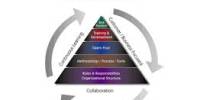Initiation
A solid project initiation will not only set your project up for success but it will also lay the groundwork for all future stages. During initiation, you’ll get the project team members assigned, brief them on the overall project goals and ask the client or project owner as many questions as possible so you can plan the project efficiently. This is also a great time to build team enthusiasm about the project and collect any last minute details that might influence project planning.
Planning
Once you’ve initiated the project and gathered all relevant information, you’ll then begin planning your project. The planning stage depends on the size of your project, how much information you have to organize and how large your team is. The end result of planning should be a clear project plan or schedule, from which everyone will follow their assigned tasks. Using a project-planning program such as Microsoft Project or Basecamp is extremely helpful when planning a project. If you don’t have access to one of these programs, do a general search online for free project planning software. Even though using a project-planning program is helpful, it’s not always necessary. Using Excel and Word to create your plan and communicate it to the team is equally as effective.
Execution
Now that you have a solid project plan, the team can begin executing the project against their assigned tasks. This is the stage where everyone actually starts doing the work. You’ll want to officially kick-off the execution stage with in-person meetings to ensure everyone has what they need to begin executing their part of the project. Getting the team started on the right track is integral to project success so articulate the schedule and communications plan clearly.
Monitor and Control
While the project is in the execution stage, you’ll begin monitoring and controlling it to ensure it’s moving along as planned. There are a variety of ways you can monitor and control a project. Casual check-ins with team leaders, organized daily “stand-ups”, or more formal weekly status meetings are effective. The information that comes out of these meetings or communication channels will inform the feedback loop and ultimately any re-planning and adjustments that are necessary to the project.
Project Close
Once all the details and tasks of your project are complete and approved by the client or project owner, you can finally close your project. The closing of a project is just as important as its initiation, planning and execution. You’ll want to document all the information from the project and organize it neatly so you can go back to it if necessary. This is also a good time to hold a post-mortem on the project so all team members can reflect on what went right, or wrong during the project. This should also be documented so the outcome can be shared with other project members and filed in a project history folder.
















